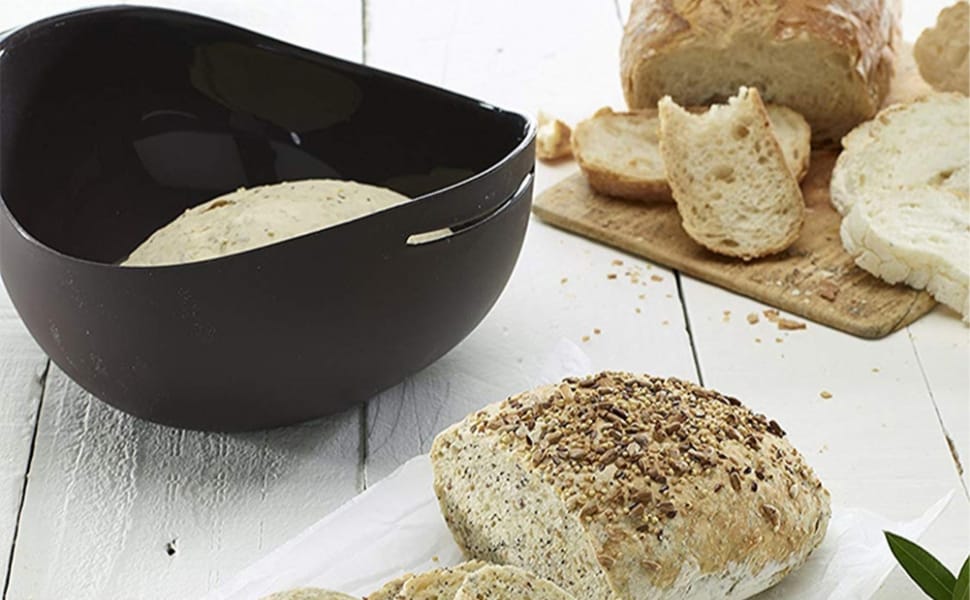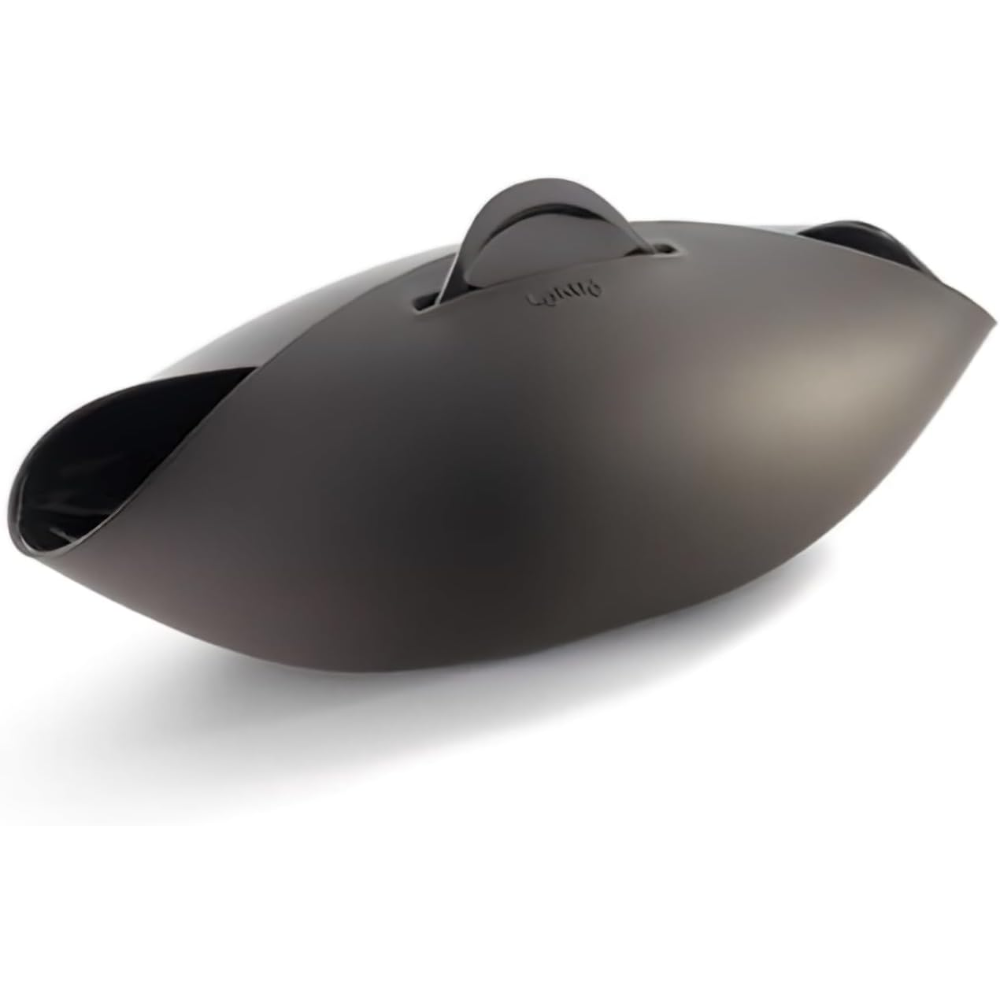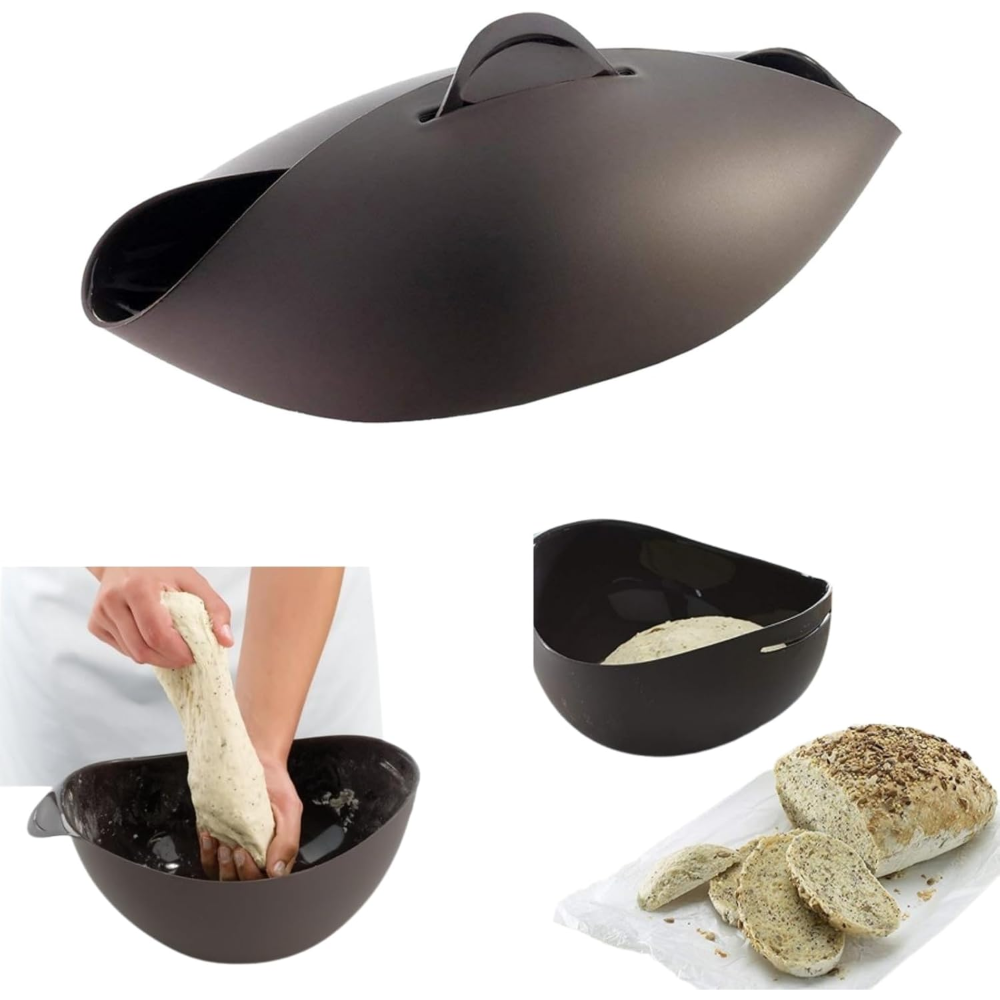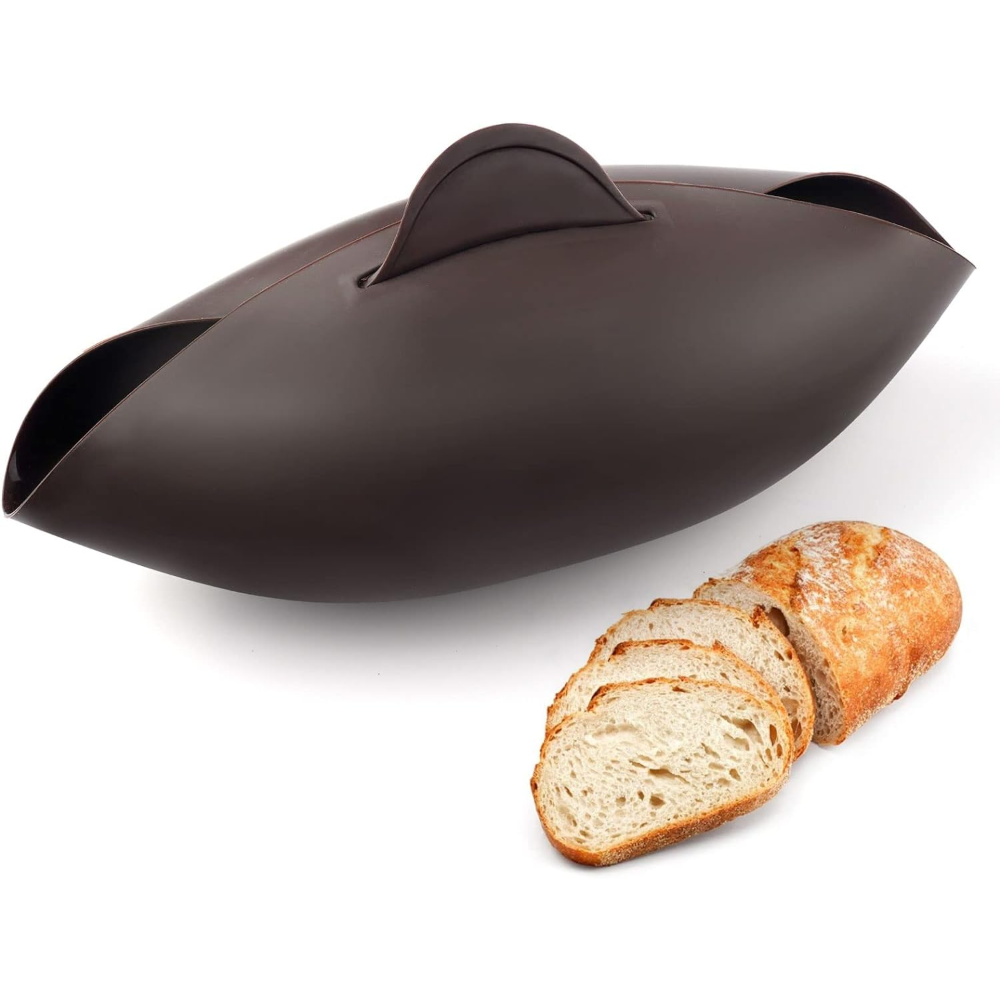Imagine the smell of fresh bread filling your kitchen. Think of that golden, crispy crust and the soft, airy inside. That's the baking dream, right? But sometimes, baking bread can turn into a sticky mess. Dough sticks to everything, baking is uneven, and getting that perfect loaf feels impossible. What if there was one simple tool that could change all that?
Meet the silicone bowl, your new secret weapon for bread making. This innovative kitchen item goes way beyond just mixing ingredients. It offers unique benefits that make your baking journey smoother and your loaves more impressive. Get ready to discover how this humble bowl can make "perfect bread" your new normal.
This article will show you why silicone bowls are so great for baking bread. We'll cover everything from their special material to smart ways to use them. You'll get practical tips and understand exactly why they help create delicious, stress-free bread every single time.
Understanding Silicone: The Material Advantage
What Makes Silicone So Special for Bakers?
Food-grade silicone offers a lot for bakers. It handles high heat easily, so it's safe for oven use. Its natural non-stick surface means dough won't cling to it like other materials. Plus, silicone is super flexible, making it simple to get dough in and out. Unlike stiff glass, heavy metal, or porous wood, silicone bends and moves with you.
Durability and Safety: A Baker's Best Friend
Concerns about kitchen materials are common, but food-grade silicone is very safe. Many bowls are BPA-free, giving you peace of mind. Silicone resists staining and doesn't hold onto food odors. This means your bowl won't smell like yesterday's garlic bread. These bowls are also very durable, often lasting much longer than fragile glass or rust-prone metal baking tools.
The Silicone Bowl in Action: Beyond Mixing
Effortless Dough Handling and Proofing
Working with sticky bread dough can be a challenge. The non-stick nature of silicone bowls makes this process much easier. Dough releases cleanly, reducing mess and waste. Use your silicone bowl for bulk fermentation, where the dough rises the first time. It's also great for proofing shaped loaves. Sometimes a light dusting of flour or a quick spray of oil is all you need, or often, nothing at all.
The "No-Stick" Baking Surface Advantage
Some silicone bowls can go right into the oven, serving as a baking vessel. This is a game-changer for certain bread types. No-knead breads, for instance, bake beautifully in them without sticking. You can even make focaccia or simple, no-shaping loaves directly in the bowl. Imagine pulling a perfectly golden artisan bread straight from its silicone home, with no fuss.
Temperature Consistency for Even Baking
Silicone's material properties help spread heat gently and evenly. This stops hot spots that can burn parts of your bread while leaving other parts undercooked. The bowl's flexibility also allows for better air flow around your dough. This creates a more consistent bake than some heavy metal or glass pans, which can trap heat unevenly.
Mastering Your Silicone Bowl: Tips and Techniques
Selecting the Right Silicone Bowl
Choosing the right silicone bowl is important for your bread baking. Consider its size; larger bowls are best for bigger dough batches. A good depth is also key to prevent dough from overflowing during rises. Look for quality, thicker silicone bowls. These often hold their shape better and last longer.
Prep and Care for Optimal Results
Preparing your silicone bowl is usually very simple. For most bread doughs, you don't even need to grease it. If your dough is extra sticky, a very light spray of cooking oil can help. Cleaning is also easy; most are dishwasher safe or wash quickly by hand. Proper storage, like nesting them, helps keep their non-stick surface in top shape.
Troubleshooting Common Silicone Bowl Baking Issues
Sometimes, a dough might still stick a little, even with a non-stick surface. This often happens with very wet dough or if the bowl quality isn't great. If browning seems uneven, ensure your oven is fully preheated. Preheating the silicone bowl itself, if baking directly in it, can also help achieve a better crust. Good heat management is vital for consistent results.
Silicone Bowls vs. Traditional Baking Vessels
Silicone vs. Cast Iron: A Comparative Look
Cast iron is known for its incredible heat retention, making a fantastic crust. However, it's very heavy and needs careful seasoning. Silicone bowls offer a more gentle, even heat, often leading to a softer crust but still a great bake. They are much lighter and easier to handle than a hot cast iron Dutch oven. You won't struggle to lift a silicone bowl out of the oven.
Silicone vs. Glass or Ceramic Bowls
Traditional glass or ceramic bowls can be good for mixing, but they are fragile. They also tend to stick unless heavily greased. Many glass or ceramic mixing bowls are not oven-safe for baking dough directly. Silicone bowls beat them here with their natural non-stick quality and flexibility. They are also much safer to drop.
The "No-Knead" Revolution and Silicone's Role
The rise of easy, no-knead bread recipes changed home baking. These recipes often need long fermentation times. Silicone bowls are perfect for this due to their non-reactive surface. This is vital when the dough sits for many hours. Famous methods, like Jim Lahey's no-knead bread, work great in flexible, non-stick vessels like silicone.
Advanced Silicone Baking: Beyond the Basics
Perfecting Sourdough with Silicone
Silicone bowls are fantastic for sourdough enthusiasts. They are non-reactive, which is ideal for both maintaining your starter and for bulk proofing your sourdough dough. For the final proof, placing your shaped sourdough in a lightly floured silicone bowl helps it hold its shape. You can then easily transfer it to a hot Dutch oven for baking, getting that perfect rise.
Exploring Different Bread Types in Silicone
Don't limit yourself to just no-knead breads. Try baking enriched doughs like brioche in silicone bowls. They also excel for focaccia, allowing easy removal without tearing the delicate crumb. The results might have a slightly softer bottom crust compared to metal. This can be a delightful difference for certain types of bread.
Expert Insights on Silicone Baking
Many bakers now see the value of silicone. As one culinary expert noted, "Silicone bakeware has transformed how home bakers approach sticky doughs and high-temperature baking." Its unique properties make advanced techniques more accessible. Using it can truly open up new ways to experiment and succeed in your kitchen.
3 of the Top Silicone Bread Baking Bowls Available on Amazon
We hope you find your next awesome thing from the list below! Each product was independently selected by our editors. Some may have been sent as samples for us to fiddle with, but all opinions in this article are our own. Oh, and FYI — AnnesAnalytics may collect a share of sales or other compensation from the links on this page if you decide to buy something (that's how we stay in business). Reviews have been edited for length and clarity. Enjoy finding your next awesome thing.
Why We Love This
Bake real homemade bread in one simple container. Its clever design makes this easy. The baker looks like a bowl, partly closed. This shape traps steam inside. Your dough stays moist. It keeps the bread from drying out. Openings on the sides let hot air flow. This gives your bread a golden, crispy crust.

Encouraging Review
"So there are no mixing bowls to wash, no counter mess, no kneading, and no worries. I now bake bread several times per week, and without any physical strain. This little item takes practically no room to store, is lightweight, insanely easy to clean, and it works like a charm. I get a lovely crust on my bread, and am the only one who knows what a breeze it is to make!" Amazon Review by S. D. Breuer
Why We Love This
This bread maker is made of soft silicone. The material is flexible and does not stick. Bakers often use silicone. It also handles high heat well. Your bread slides right out of this silicone maker. Its surface keeps food from sticking. This makes taking out your fresh loaf easy. No sticking or tearing happens.

Encouraging Review
"This was my first time making bread without a bread machine. The reason I’m saying this is because I didn’t do all the mixing in the bowl. Once I went through the process of combining everything and putting it in the bowl and baking the dough, it was great. The bread was delicious." Amazon Review by Susan Schebesch
Why We Love This
The bread maker has a clever design. Its shape is like a bowl, partly closed. This lets steam move freely inside. Your dough stays moist as it bakes. It stops your bread from getting dry. You get soft, fresh loaves.
Our baking mold uses pure food-grade silicone. No coatings will peel off this pan. It won't rust or scratch either. This is unlike old metal bakeware. The mold stacks easily for storage. It saves room in your kitchen. Plus, it quickly springs back to its shape.

Encouraging Review
"I've been searching for weeks for a dutch oven alternative for bread because I needed something cheaper. My BF came across this silicone bread baker with such great reviews. I said alright we'll try it. I've never baked bread before. I'm new to sourdough starter. I got this yesterday and last night made my first loaf in the pic. Amazing! Didn't turn out as well as I wanted but that was my fault because I put too much flour on when proofing but I'm still learning. But in this baker the loaf is golden brown and the clean up was so easy all I had to do was wipe it out that took maybe 2 minutes. So glad for this purchase!!" Amazon Review by Jess H
Conclusion
Silicone bowls truly simplify dough handling and stop sticking. They make the bread baking process much more enjoyable. Their versatility shines through, from proofing delicate sourdough to baking hearty artisan loaves. These bowls truly enhance every stage of making bread.
Embrace the silicone bowl advantage for consistently better bread. It's time to experiment and find your perfect bake. You'll wonder how you ever baked without one.
FAQ: Perfect Bread with Silicone Bowls
Why use a silicone bowl for baking bread?
Silicone bowls provide even heat. This helps your bread bake uniformly. It also prevents sticking.
Can silicone bowls withstand high oven temperatures?
Yes, most silicone bowls are oven-safe. They can handle typical baking temperatures. Always check the product’s heat rating.
How do silicone bowls make bread rise better?
Silicone's non-stick surface helps dough release easily. This allows the dough to expand fully. It promotes a better crust.
Are silicone bowls easy to clean after baking?
Absolutely. Silicone is easy to wipe clean. Many are also dishwasher safe for quick cleanup.
Will a silicone bowl affect the taste or smell of my bread?
No. High-quality silicone is food-grade. It won't transfer flavors or odors to your bread. Enjoy pure taste.




